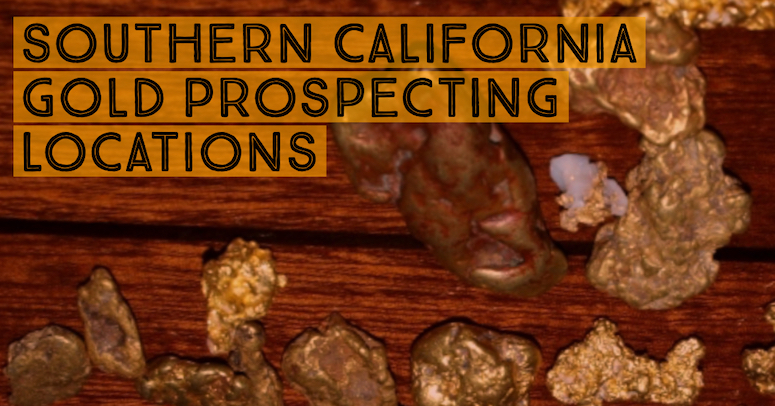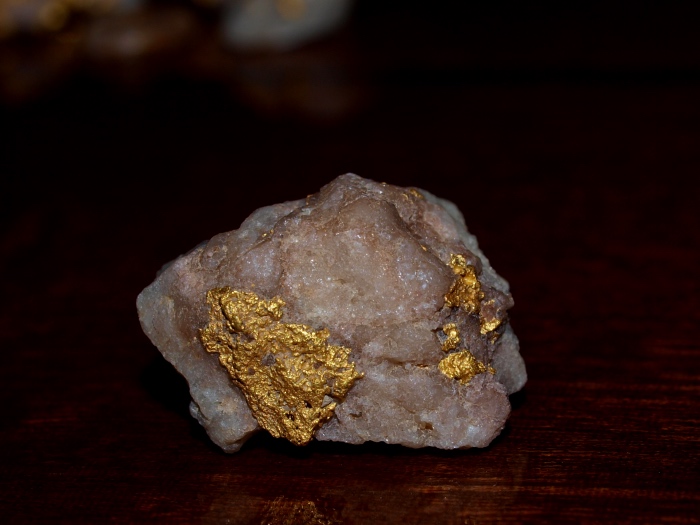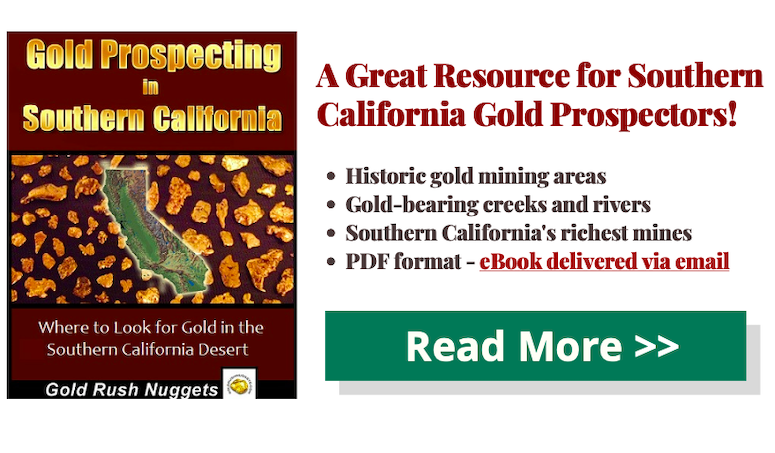
The California gold rush was one of the most significant turning points in American history, bringing roughly 300,000 people to the Golden State from all over the United States. It was living proof of the transformative power of gold fever— what were once dusty and barren areas became boomtowns overnight, and the sheer rapidity of development is immortalized in today’s historical sites and museums.
The richest mines in California were in the Sierra Nevadas, but that is not to say that all the gold is up in Northern California. To the contrary, there were many rich gold strikes that happened in SoCal also! And not everything has been relegated to the history books. You can still find gold in these areas if you try.
Here, we go through some of the best places in Southern California to try your luck. Prospectors from Los Angeles, San Diego, and as far up as Bakersfield will find some that there is gold closer than they think.
San Gabriel River – A Popular Escape from the City
The San Gabriel River is one of the closest and most prolific areas for gold prospecting right outside the city. Located to the east of Los Angeles, the river stretches from the San Gabriel Mountains toward the San Gabriel Valley. Having once passed across an immense alluvial floodplain, this area is known for its mineral richness.
The upper part of the San Gabriel River had a multitude of placer gold discoveries as early as the 1800s. Between 1855 and 1902, there was roughly 5 million dollars’ ($125 million in today’s terms) worth of gold that had been sourced from this area by enterprising prospectors.
A popular area for panning in the San Gabriel River is the East Fork, said to be the richest section of the river. Many of the secondary creeks and gulches throughout the mountains also have plentiful gold in store. Other areas to hunt for placers are from Camp Williams Park upstream, within the National Forest.
Most of the gold found in San Gabriel River come in small flakes, although there have also been discoveries of gold nuggets and the occasional gold-in-quartz piece. Lode gold can be found in the San Gabriel mountains themselves, occurring in various metamorphic rocks like gneiss and schist and found along with other minerals.

Santa Clarita – Gold found Before the “Gold Rush”
Santa Clarita is another area quite close to the city of angels that’s a historical site for gold discovery. Located roughly 35 miles northwest of downtown LA, Santa Clarita was the site of a gold discovery even before the famed 1848 Sutter’s Mill find that sparked the California gold rush.
That’s right, in 1842, Francisco Lopez was herding cattle in Placerita Canyon when he unearthed gold flecks among the dirt and roots near a sycamore grove. Upon sampling his find, the U.S. Mint in Philadelphia certified them as 0.926 fine, and something of a minor gold rush ensued. Several mines operated during that time, with those in the Soledad Canyon producing most of Los Angeles’ recovered gold.
Today, recreational prospectors often head to dry creek beds and hillsides in the area. While finds are not as proliferate as they were back in those early years, some big finds occur every now and then. In 1993, Kent Gates mined a random spot on public land near Acton and uncovered a 12.8 ounce 23-karat gold nugget!
Read: What is the Best Gold Detector for Finding Gold Nuggets?
San Bernardino County – Big Desert with Scattered Mines and Prospects
Heading east of Los Angeles once more, we find ourselves in America’s largest county — San Bernardino. This area was very minerally prolific, with both placer deposits and lode gold mined and recovered from the early 1850s up until the 1960s.
Stedman and Vanderbilt were the sites of large deposits of gold, as well as Alvord, Oro Grande and Old Dad Mountain. The first confirmed gold recovery in the county was in Salt Springs, also known as the Amargosa District. Most of the mines that operated in this area were situated near the junction of Salt Creek and Amargosa River, with gold occurring in quartz veins throughout the area.
West of Oro Grande, the Silver Mountain district was known predominantly for silver but also produced gold as a by-product. Other areas of interest in or near San Bernardino are Holcomb Valley, where numerous placers were found in the 1860s, and the Dale district which is home to the Brooklyn gold mine.
There are countless areas in San Bernardino County where you can swing a metal detector in hopes of finding a gold nugget. There are still lots of undiscovered patches of gold scattered throughout this vast desert.
Also Read: Lytle Creek, CA – Rich Gold Strikes near San Bernardino
Kern River – A Rich Gold Strike near Bakersfield
Located a bit further from Los Angeles, Kern County boasts of a rich mining history, with the Kern River remaining a popular area for prospectors to pan for gold. When the gold rush peaked and the Sierra Nevada Mountains began to get mined out, the Kern River was the next hotspot that saw its own gold rush in the 1850s. The first discovery made here was in 1851 at the mouth of Greenhorn Creek, which flows into the Kern River a few miles downstream of Miracle Hot Springs. As a result of the attention this area bore, the mining towns of Kernville and Keyesville developed.
The Keyesville Recreational Mining Area is located 2 miles northwest of Lake Isabella, and its 400 acres are open to the public for prospecting. This is a great place for beginners to try their hand at gold prospecting without having to worry about mining claims or private property.
Many Areas to Explore
The areas mentioned here barely begin to scratch the surface of the many places in Southern California that have golden opportunities. Even if you live in the city, you can find areas to prospect that are just an hours drive.
California is the known as the Golden State for a good reason. And even though most of the large mines have been abandoned for decades, there is still gold out there left to find. Do your research and get out there!
Next: 17 of California’s Richest Gold Mining Locations

